- Home
- 7 Steps of Goal Setting
- How to Stop Procrastinating using the MCII technique
How to Stop Procrastinating with Mental contrasting and implementation intentions
When we talk about how to stop procrastinating - it is important to state upfront that procrastination is not laziness. Instead, procrastination is the gap between intention and action. Because of this, procrastinators often suffer – their happiness may be diminished, their relationships can be strained, and their health can be ignored.
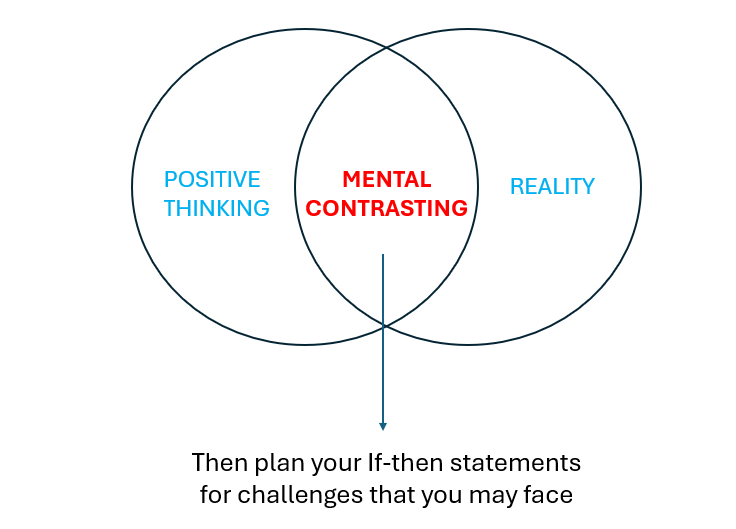 Combining Mental Contrasting with If-Then statements
Combining Mental Contrasting with If-Then statementsThe problem is that the traditional approaches to tackling procrastination are to try harder (aka willpower) and improve your time management. However, these are not the right choices for many procrastinators because they don't focus on the complex emotions that underpin procrastination. Mental Contrasting and Implementation Intentions (MCII) is different because it combines two psychological strategies that work to bridge the gap between intention and behavior.
There are two components to MCII - these are mental contrasting and implementation intentions. Lets look at these separately.
How to Stop Procrastinating with Mental Contrasting (the MC part of the MCII technique)
Mental contrasting originally comes from work developed by psychologist Dr Gabrielle Oettingen (1999). Mental contrasting involves imagining your desired future and then to contrast this with your current reality and to acknowledge the current obstacles that stand in the way of you completing that task/goal.
For example, it might be the joy and achievement you will feel when you complete that important but non-urgent task you have been putting off (this is the desired reality). This is then contrasted with the current reality and obstacles that you face, such as every time I start the report I get distracted by social media and feel overwhelmed with the amount of work that I need to do.
So you can see that this is more than just positive thinking, which tends to fool our minds that we've already attained the goal. Mental contrasting asks the question of what challenges and obstacles might arise in the face of achieving that desired future.
I will use a personal example: bedtime procrastination was a problem for me. I am busy throughout the day with work, lectures and looking after the children. So, the only leisure time I get is once the kids go to bed. So, I tend to relax and watch too much Netflix - which means I delay going to bed (bedtime procrastination). The result: a grumpy dad the next day :)
So, using mental contrasting, I pictured clearly what I wanted to do (which was to go to bed on time and feel well-rested the next day). The obstacle or challenge that I then vividly imagined was the internal obstacle to reaching this - which was my desire to keep watching videos on Netflix.
So this is the mental contrasting bit and it helps to recognize the gap between intention and behavior.
To bridge this gap - lets look at the implementations bit (the II of the MCII technique).
How to Stop Procrastinating using Implementation Intentions (the II of the MCII technique)
Developed by Dr Peter Gollwitzer, implementation intentions involve using "if-then" plans for the future. The idea here is to tell your mind exactly when and where you will take the action (i.e. the trigger) . This removes the decision burden, which is when procrastination sneaks in.
In the bedtime procrastination example above, a trigger is tiredness and zoning out in front of Netflix past my 10pm bedtime. So I might set the "if-then" plan to 'If it is 10pm, then I will stop whatever I am doing, put the iPad and phone outside the bedroom, and get ready for bed!"
What I have found in this deceptively simple strategy is that using MCII takes the burden out of decisions and that under stress (or tiredness) I just follow through on my pre-planned response without much thinking. I don't have to rely on willpower to turn off Netflix :)
By combining mental contrasting with implementation intentions I leverage the clarity from mental contrasting with the behavioral automation of implementation intentions.
Some examples of the MCII technique
In two studies (totaling 604 students), bedtime procrastination was reduced. MCII (compared to the control group) increased their commitment to reducing bedtime procrastination and also reduced their procrastination in going to bed (Valshtein et al, 2019).
Below are some common examples that I have used with clients on how to stop procrastinating with the MCII technique.
Example 1: Studying for an exam
Goal. To do very well in the upcoming exam
1. Mental contrasting:
- Desired reality. Picture yourself getting the exam score that you want. Imagine feeling proud and also celebrating your result with family and friends.
- Current reality. Feelings of overwhelm and lack of motivation when starting to study.
2. Implementation Intentions:
- If-Then Plan: "If I feel overwhelmed and want to procrastinate, then I will set a timer for 25 minutes and conduct one Pomodoro study session"
Example 2: Parent of children trying to get back into exercise
Goal. Getting into a regular exercise routine
1. Mental contrasting:
- Desired reality. Picture yourself feeling energized and healthy. Imagine yourself being able to keep up with the young children's energy levels.
- Current reality. Often, I am too tired after work to workout.
2. Implementation Intentions:
- If-Then Plan: "If I feel too tired after work, I will change into my workout clothes and do a 10 minute warmup to get started."
Your steps on how to stop procrastinating by using the MCII technique
Step 1: Identify a specific goal or task that you have been procrastinating on. I have worked with clients who have a goal to lose weight and get healthy, another client who was putting off working on a project that was important but not urgent, and a student who wanted to overcome procrastination on their assignments and hence get better grades. The key is to choose something that is important to you. To give yourself the best chance of success, start small and choose one specific area where you want to reduce procrastination.
Step 2: Vividly picture yourself achieving that task or goal. What does it look like, how does it feel. Try to use the different senses in this visualization exercise. What you are doing here is more than just daydreaming - you are identifying the value of you achieving this task.
Step 3: Now comes the contrasting bit of mental contrasting. Picture the obstacles that stand in your way to this desired future. This could be behaviors, habits, thoughts that are holding you back. Try to be as specific as possible here as you will be setting strategies to overcome these challenges.
Step 4: With an obstacle you want to create specific "if-then" plans that link the trigger or the challenge, to the desired outcome. For example, lets say I want to complete a lecture for work. One of my challenges/triggers is that I check social media. So I might use an "if-then" plan for this that looks like this 'If I find myself on social media when writing my lecture, I will close all social media and set a 20 minute timer and work on my lecture".
FAQ: Seven common questions on how to stop procrastinating using the MCII technique
Over the years, I have had many people using the MCII technique ask me some questions on how to stop procrastinating using the MCII technique. Here are some common Q&A:
1. How do I choose the right goals to apply to?
- Answer: We can procrastinate on many different things, but I find it best for procrastinators to start the technique with very targeted and specific goals that are meaningful for them.
2. What if I cannot identify the obstacles for mental contrasting?
- Answer: My advice is to break down the task as much as possible and then look at each step in detail. If this task is something that you have previously procrastinated on then reflect on that experience (or experience with similar situations) and identify potential obstacles.
3. How do I make an effective "if-then" plan?
- Answer: You need to have a clear trigger that links to a specific, actionable plan. For example, the clear trigger (e.g., "When I feel the urge to browse social media while working on an assignment...") to a specified action (e.g., "...then I will close the app and refocus and use the Pomodoro technique for 20 minutes."). The idea is to automate responses to distractions or challenges.
4. What if I don't follow through with my "if-then" plans?
- Answer: Key is to reflect on why this was. Was the plan too ambitious, or was the trigger too general? Adjust until you have a specific trigger and action. Also consider setting reminders or have an accountability partner such as a friend to offer support.
5. How can I stay motivated to continue using regularly?
- Answer: Consider celebrating small victories, consider tracking rewards, and remind yourself regularly of the benefits you have achieved using the technique. Also, ask yourself if you need to refine your goals and plans to keep them meaningful to you.
6. Can MCII be used for all types of procrastination, or is it better suited for certain tasks?
- Answer: I think the MCII technique works best for tasks that have specific identifiable obstacles. More complex emotional or psychological barriers may additional procrastination strategies that complement the MCII
7. How does relate to my overall mental health and well-being?
- Answer: MCII is an evidence-based way to reduce many different types of procrastination and in doing so, increase goal achievement. can contribute to improved well-being, reduced stress, and increased satisfaction. However, it is important to recognize when procrastination may be linked to deeper mental health issues that require professional support.
References used
- Gollwitzer, P. M., & Brandstätter, V. (1997). Implementation intentions and effective goal pursuit. Journal of Personality and Social Psychology, 73(1), 186–199. https://doi.org/10.1037//0022-3514.73.1.186
- Oettingen, G. (1999). Free fantasies about the future and the emergence of developmental goals. In J. Brandstädter & R. M. Lerner (Eds.). Action & self-development (pp. 315–342). Sage.

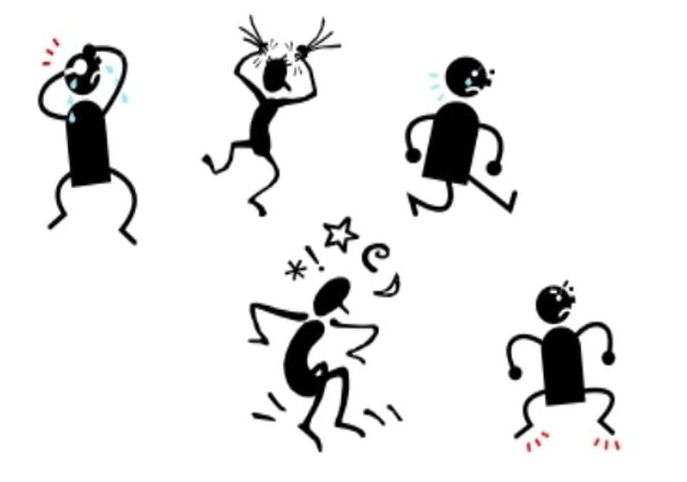
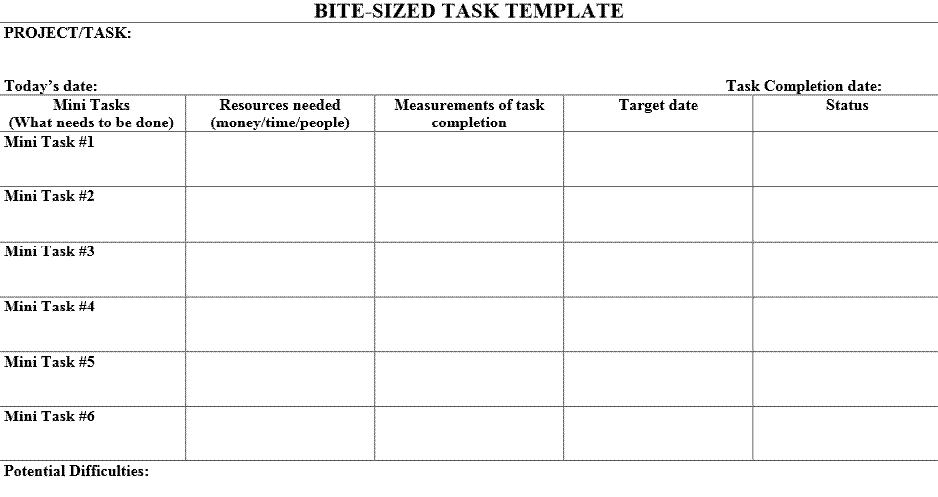
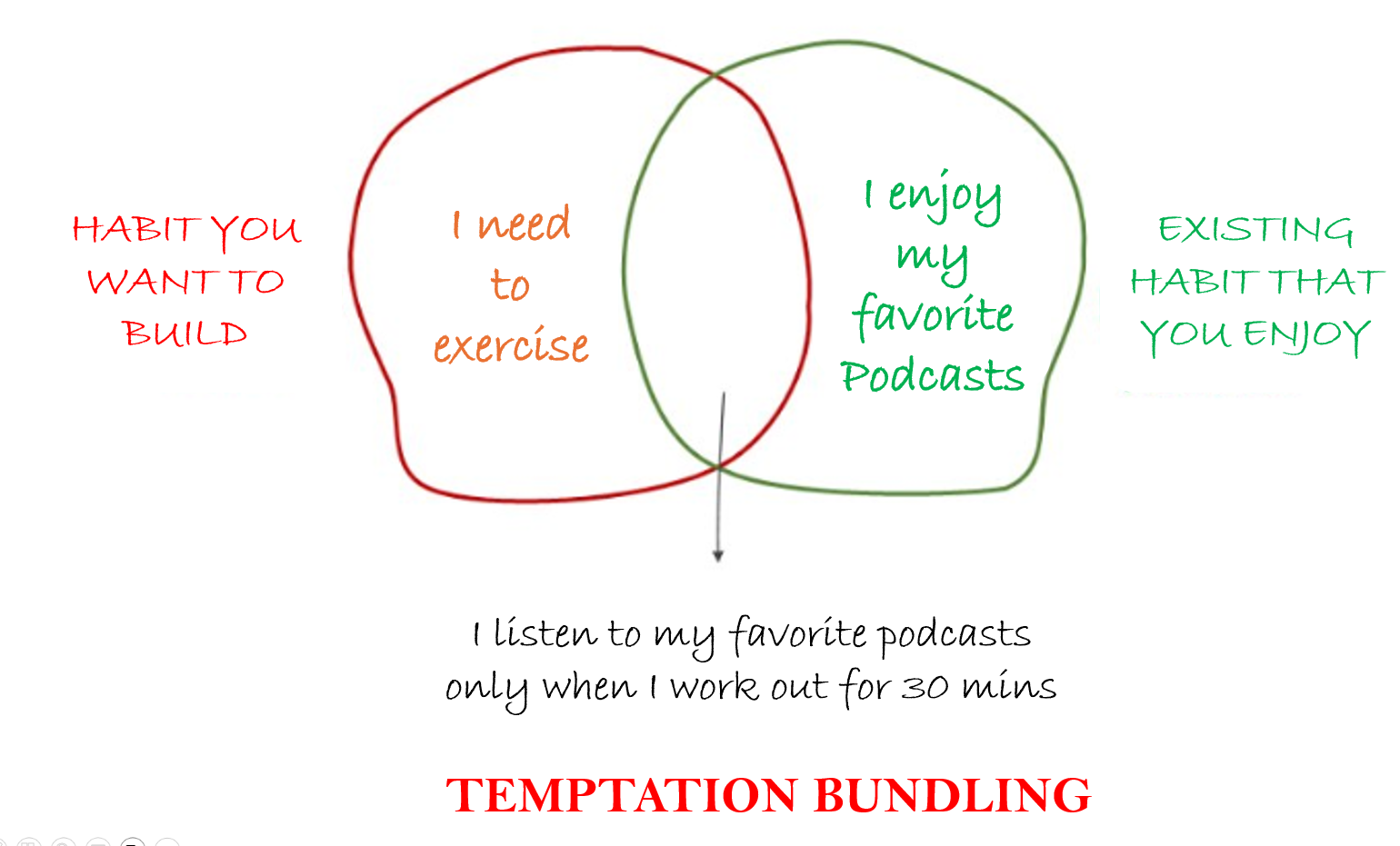
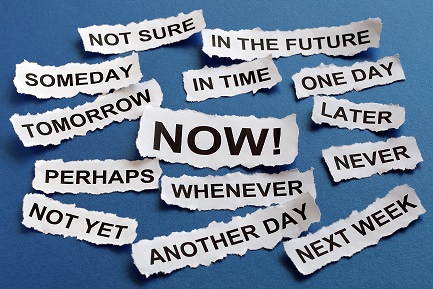




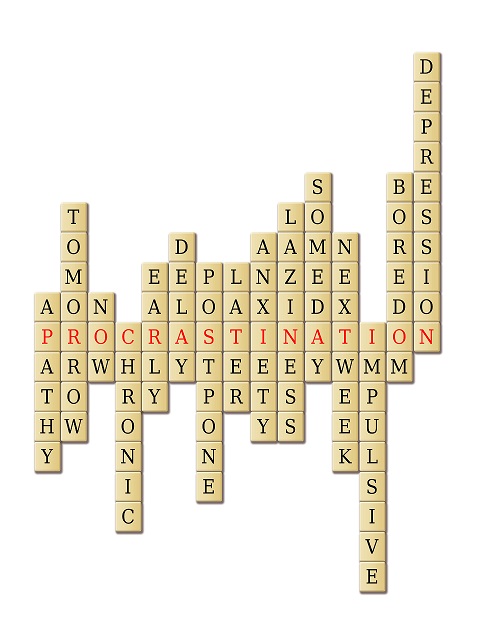

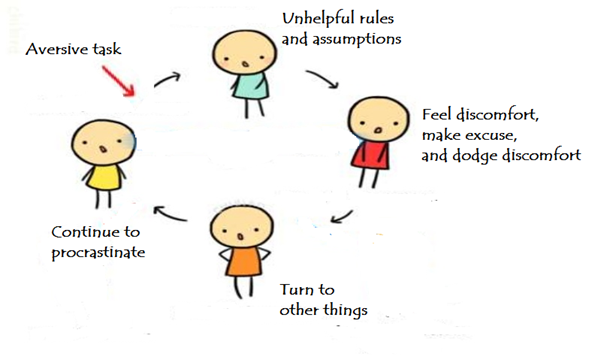

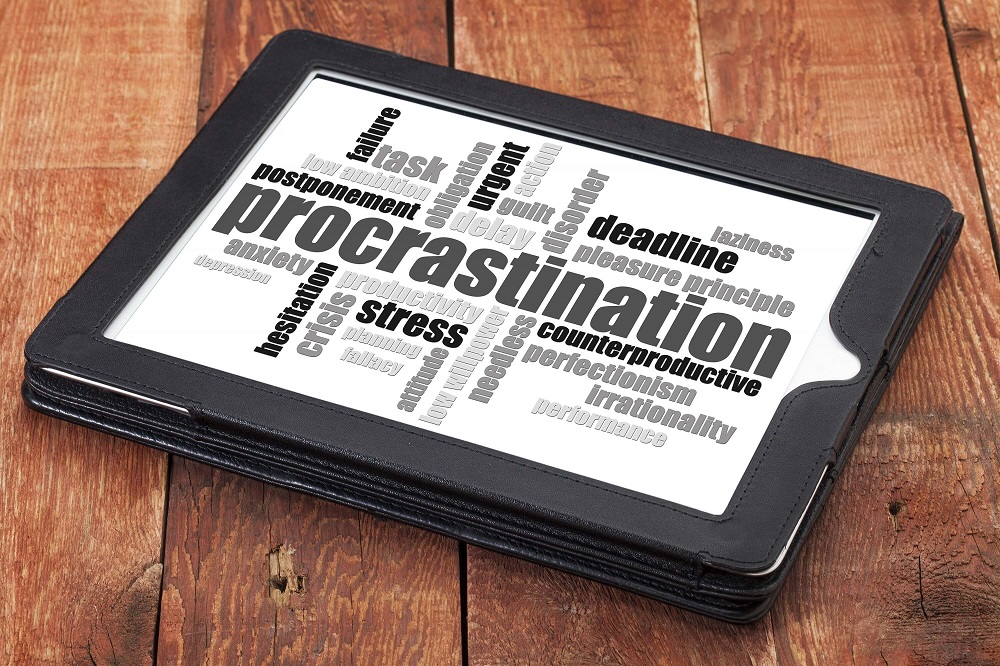

New! Comments
Have your say about what you just read! Leave me a comment in the box below.